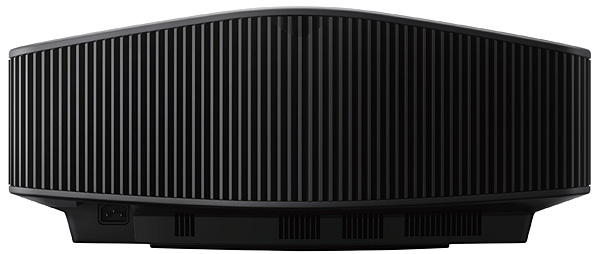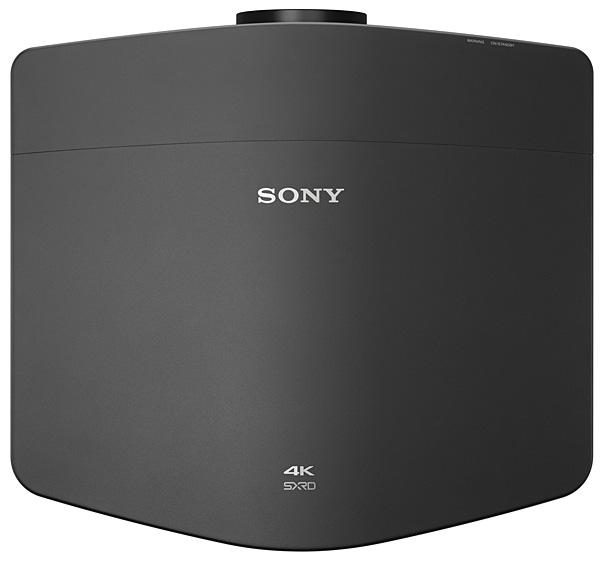At half the Price of SONY's 995, JVC NX9 will likely be an overall winner in a comparison shootout.
I suspect the 995ES produces a more detailed crisp image (due mostly to the high quality lens). The NX9 will likely have superior black level and contrast than the Sony.
Sony VPL-VW995ES LCOS Projector Review Page 2
For a standard dynamic range calibration, I targeted 16-foot lamberts (ft-L) for my measured brightness off the screen. For high dynamic range I selected the highest laser setting possible to maximize light output. While the VW995ES is rated at 2,200 lumens—a 10 percent increase over the VW885ES—I was not able to substantiate Sony's claimed light output boost. Peak onscreen brightness with the VW885ES at the exact same throw distance and position measured 28 ft-L. The VW995ES, on the other hand, only delivered a peak of 24 ft-L regardless of how I set it up. That equates to around 1,650 lumens when calibrated. I'm sure there is unit-to-unit variation, but potential buyers should take this into consideration when specifying their setup to ensure they'll get sufficient light output.
The VW995ES does provide plenty of brightness for standard dynamic range images at screen sizes up to about 12-14 feet wide. But for HDR playback, which requires higher light output for optimal performance, users may want to stick with more modest screens that are a maximum of 10-feet-wide unless using a high-gain model. This hurts the value proposition of the VW995ES as most projector designs at or near this price point are typically quite bright and designed for use with large, cinema-style screens that are perforated or weaved designs. I made the same comment in my review of JVC's similarly priced DLA-RS4500, but that model delivered modestly higher light output with its 3,000-lumen design.

Out of the box, the projector's accuracy in the Reference picture mode was quite good. I selected the 2.4 gamma option, which produced an overall gamma average of 2.23. Sony only provides a two-point grayscale adjustment, but with some work I was able to dial in an average gamma of 2.4 (targeting BT.1886) and a max dE of 1.5. (Delta E, or dE, is a figure of merit indicating how close the color comes to the standards, either D65 for the white point or the color coordinates for each of the primary and secondary colors that define the color gamut under test. Values below 3 are generally unnoticeable.) While these results overall are outstanding, I'd like to see premium projectors like this one feature at least 10-point grayscale adjustments similar to what's provided in the user setup menu of most consumer flat-panel TVs. It would allow for a more precise level of adjustment during calibration, which can be very important for properly dialing in the gamma of a display. This comment applies to Sony projectors but also their rivals as well. Sony does offer specialty software to their dealers and installers that offers this level of adjustment for projectors, but it is not available to end users.
Colorimetry was also quite good with the VW995ES, which automatically selects the proper color gamut based on the input signal. Pre-calibration, the projector's REC.709 color performance was spot-on, but when I switched to the REC2020 color mode the results weren't quite as stellar. Unlike Sony's VW5000ES, VW1100ES, and VW1000ES models, the VW995ES does not feature a color filter to increase gamut size. Without a filter, the projector's measurements showed only 87 percent coverage of the P3 color gamut within REC.2020. This was a nitpick I had with the VW885ES, and for the VW995ES I was hoping that with Sony would implement the same filter used by its other premium projectors. Gamut accuracy was quite good, however. When evaluated using CalMan's color checker feature, the majority of color points inside the P3 gamut were below a dE of 3, and the numbers only crept up when you measured the extremes of the REC.2020 gamut, which no projector on the market can currently reach.
Calibration complete, I turned my attention to contrast performance. For the VW995ES, Sony has added an iris system to the lens. Similar to what we see with the company's lower-end models and projectors from competing brands that feature apertures, I was hoping the iris system would let me dial in peak white point while simultaneously increasing contrast, but the iris unfortunately is only meant to work in conjunction with the projector's laser-dimming feature in dynamic laser mode. I found this a bit disappointing since lowering the laser output on the VW995ES decreases its overall contrast, and contrast is something you want to do everything you can to preserve with a projector.

My contrast measurements of the VW995ES were quite different than what I expected. I started with native contrast measurements—ones taken with no dynamic laser dimming engaged. First up was traditional full-on/off (a full white screen followed by a full black screen), and for the next round I used my single-pixel pattern (see sidebar) in place of the full black screen.
I wasn't expecting to see any difference between the contrast ratio sets since a dynamic system wasn't involved and a single white pixel out of 8,847,360 pixels should have little effect on the black measurement. But that didn't turn out to be the case. Full-on/off measured higher than the VW885ES I reviewed last year and came in at 16,400:1 at my normal zoom position. Peak native contrast measured 20,000:1 at minimum zoom and 14,000:1 at max zoom (full laser output only). When I did the exact same measurements with the single pixel added to the black image (far right corner, away from the measurement position) the projector's native contrast ratio dropped to 12,000:1 at my normal zoom setup with a peak measurement of just under 14,000:1 at minimum zoom—a significant drop.
Engaging the dynamic dimming system on the VW995ES did boost contrast ratios, but even with the new iris added to the lens, measurements were not much different than what I got with the previous VW885ES. While black levels did drop a bit, a corresponding drop in white level kept the overall contrast ratio nearly the same. Full-on/off contrast ratio in Limited mode measured 24,000:1, while Full mode was infinite as expected. Introducing the single-pixel pattern dropped the contrast ratio to just under 18,000:1 in Limited mode and 19,000:1 in Full mode. So, outside of engaging the projector's Full dynamic laser dimming mode (which creates a complete a blackout with no light appearing onscreen), the best contrast performance one can expect from the VW995ES is just under 19,000:1. And once you get below a 2 percent image level, even the dynamic contrast numbers line up with the native contrast measurements.
Overall, I was quite pleased with the subjective contrast performance of the VW995ES, which, due to its lower black levels, delivered a richer-looking image than I experienced with the VW885ES. Contrast was rarely was an issue, even with very difficult material. The effect of projector's dynamic system can still be a bit jarring during transitions to and from black when the Full dynamic dimming is used, but I found that mode to be preferable to using Limited mode, or turning off dynamic dimming altogether.
- Log in or register to post comments



Everyone who mentions the NX9 seems to conveniently forget that it's a lamp-based projector. That's a HUGE difference! You will need frequent (every 1-2 years) calibration if you want to maintain a reference image, in addition to the lamp replacement. When you factor in these costs, the business case for the laser may make sense. It did for me.

This looks exactly like my 9 year old Sony projector. I bet if I bought it and replaced mine with it, my wife would never notice the difference. Maybe I could switch the two out in a show room somewhere, might be worth a shot. The guys at Best Buy are so dense, they might never catch on. I really miss qualified AV help when I buy things.

What did I heard is you can get 2100 lum only in Bright Cine mode, get around 1600 lum even set 100% light output in others mode. Don't know is it correct.
























































